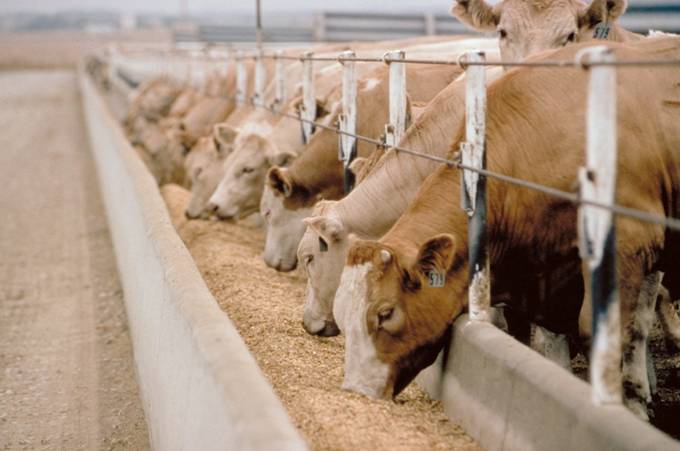
Agricultural News
Growing Demand For Feed Wheat May Ease Storage Crunch At U.S. Elevators
Thu, 27 Oct 2016 15:47:35 CDT
 Grain handlers are anticipating an uptick in orders for feed wheat, which should allow them to move excess wheat inventories as farmers bring in a record fall harvest, according to a new report from CoBank.
Grain handlers are anticipating an uptick in orders for feed wheat, which should allow them to move excess wheat inventories as farmers bring in a record fall harvest, according to a new report from CoBank.
"While all grain prices have fallen to low levels in the face of this year's record-large harvests, wheat prices have fallen the most," says Tanner Ehmke, CoBank senior economist and co-author of the report. "As a result wheat is destined to become a staple in livestock's feed rations for at least the next year or two and will remain competitive with other feed grains for the foreseeable future, barring a major weather event."
Current USDA forecasts indicate that wheat feeding and residual use will climb to 260 million bushels in 2016, up from 152 million bushels last year. With cash wheat prices on the plains continually finding new lows-some local areas are posting the lowest prices in decades-USDA's feed-wheat estimate could likely see upward revisions given wheat's high stocks-use ratio, according to the CoBank report.
In some areas hard red wheat has traded more than 40 cents below the price of corn. In other areas soft red wheat has a 30-cent premium to corn, as prices drop with the arrival of the new crop. The shortfall in South American corn production has boosted U.S. corn exports, supported corn prices and widened the wheat-corn price spread. Further, an abundance of lower-priced old-crop corn-which could be discounted due to new-crop supplies-adds more pressure to grain prices.
In contrast a shorter supply of other feed grains, such as oats, barley and sorghum, will likely add to the attractiveness of corn and wheat in animal diets.
"A key question becomes whether farmers will be willing to sell wheat stocks as several market factors are incentivizing crop retention and storage," notes Ehmke. "Still, the need to make room for the large fall harvest could ultimately motivate sales."
Storage and price matters aside several other factors come into play as livestock producers incorporate wheat into rations. One such factor is that wheat has less energy than corn, therefore requiring livestock producers who add more wheat to rations, to have to add other grains with a higher energy content to compensate. However, wheat also contains more protein than corn, meaning livestock farmers must also consider the cost savings from reducing the amount of competing protein sources like soybean meal.
The substitution rate of wheat in place of corn is dependent upon the method of grain processing used prior to feeding.
"These factors, along with on-farm logistics and other animal health considerations, mean livestock producers will need to work closely with their nutritionist, veterinarian and other key advisors," says Trevor Amen, the other co-author of the report and an economist and livestock specialist at CoBank. "These relationships will be crucial as producers consider ration ingredient changes and how to best incorporate them."
Regardless of the individual decisions that each livestock operator must make based on local markets, they all stand to reap huge rewards with an abundant feed supply that is likely to grow into 2016-17 with a potentially record fall harvest. In the meantime, grain handlers that still hold substantial wheat inventories are being offered an opportunity to create much needed space by sending more wheat into the feed mix.
A brief video synopsis of the report, "Elevators Look to Feed Wheat to Lighten Load," is available here. The full report is available to media upon request.
Source - CoBank
WebReadyTM Powered by WireReady® NSI
Top Agricultural News
More Headlines...



















